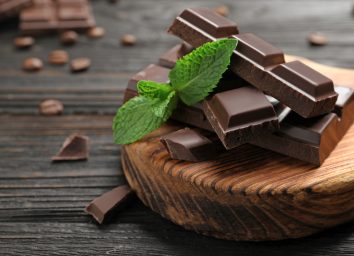The #1 Secret to Getting Leaner, According to Trainers
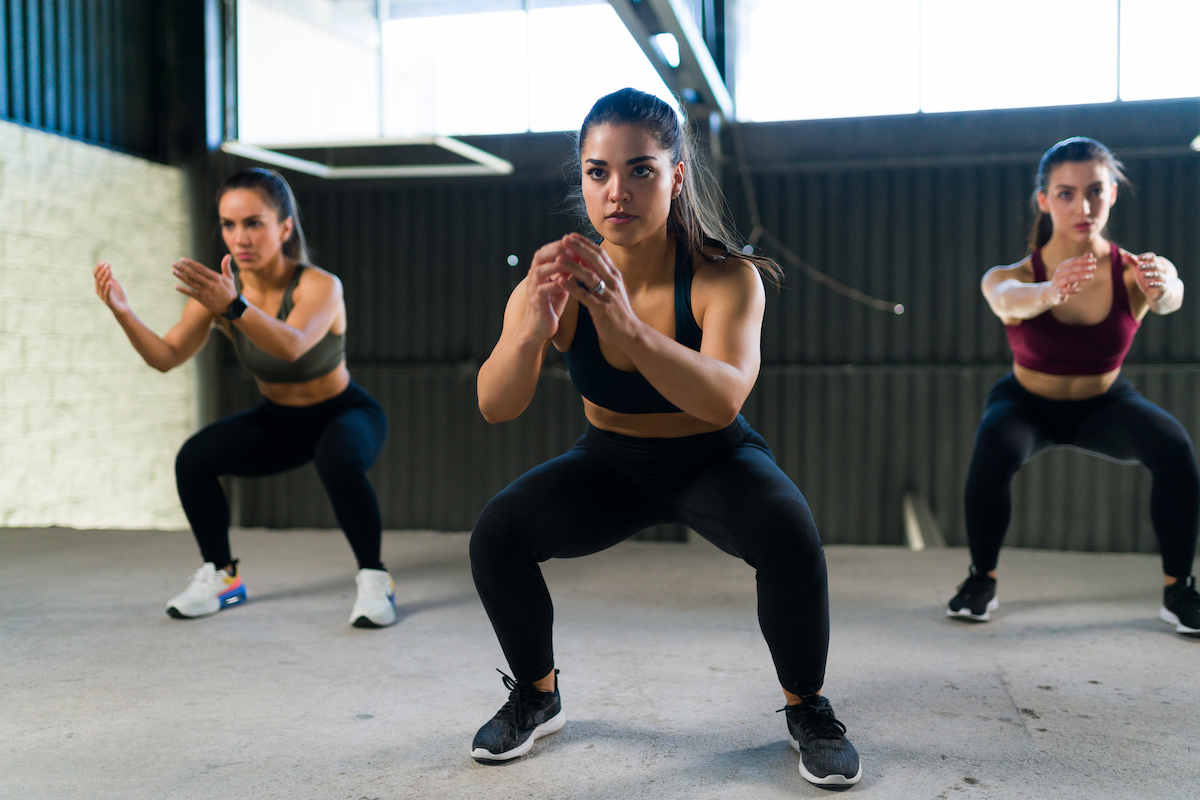
Despite what you may see on late-night infomercials or read in your spam inbox, there are no magical ways to sculpt the ideal body overnight. Building a lean, toned physique takes hard work and dedication.
While it's true that no fitness fad or diet of the month will ever replace good, old-fashioned clean eating and exercise, there are ways to speed up your lean body journey and achieve the look you've always wanted in a more efficient manner. Luckily, we spoke with a few accredited fitness trainers and strength coaches to get their take on the most overlooked secret to getting lean.
To start, stop expecting results within a matter of hours or days. Personal fitness is about the journey just as much as the destination. Your road toward a better body will be much more enjoyable once you accept that.
"If your best-laid plans for leaning out are taking longer than anticipated, make sure you don't view it as a failure," explains Jack McNamara, Ms.C., NASM-CPT, C.S.C.S., of TrainFitness. "Progress can occur in peaks and troughs, so remember to be kind to yourself and stick with the plan. The key to successful fat loss is consistency over severity."
Intrigued to learn more? Read on for more secrets on how to lose weight and tone up, ending with the #1 secret to getting lean, according to trainers. And next, don't miss This Workout Plan Will Keep You Lean Throughout the Holidays.
Prioritize sleep

Changing your physique may start in the gym, but it continues at bedtime. When we exercise, we push our bodies to exhaustion, burning stored energy and breaking down muscle fibers along the way. In many ways, however, this is only half of the fitness process. Proper rest following an intense bout of exercise is just as important as the workout itself.
"Perhaps the most overlooked aspect of getting lean is also one of the most important, especially if you're already leaner to start with. Getting decent sleep may be the most important thing you can do to improve fat loss if you're lean," McNamara explains.
He adds that numerous bodily hormones are in charge of regulating both overall sleep quality and circadian rhythm.
"When these hormones are dysregulated, it can severely impact our level of hunger, the types of food we crave, even how active we'll be throughout the day. All of these combine to make successful fat loss an uphill struggle," McNamara says.
Related: Sign up for our newsletter for the latest health and fitness news!
Stay active outside of the gym
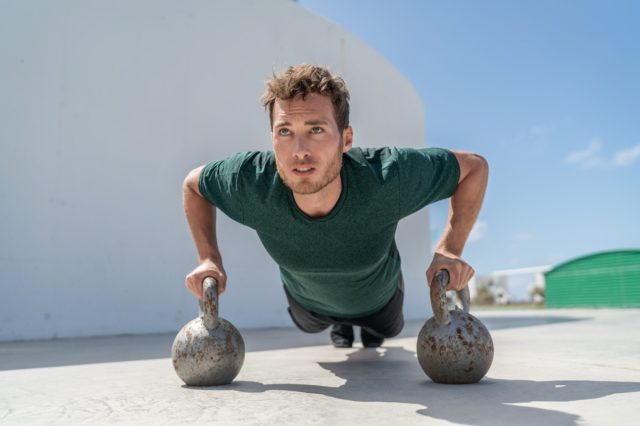
Attaining (and maintaining) a lean look is a lifestyle, not a chore to be accomplished day in and day out. Stop viewing exercise and physical activity as a job, and start incorporating them into various aspects of your life.
"One key aspect of getting lean that is forgotten about is the activity outside of your strength sessions and nutrition plan," says Jack Coxall, Co-Founder and Personal Trainer/UKSCA Accredited Strength and Conditioning Coach at Fitness Lab. "Even if you work out 6 times a week, that is 6 hours out of 168 hours in a week. The real success comes from everything you do outside of the gym when it comes to getting lean."
According to Coxall, roughly 20-25% of an average adult's daily energy expenditure (calories burned) actually comes via "non-exercise activity thermogenesis" (NEAT), or all your activities and movements performed throughout the day.
"Yes, you have the classic 10,000 steps per day as an example, but it doesn't have to be this," says Coxall. "Three brisk, 10-minute walks have proven to be just as beneficial. Do a 30-minute yoga session, bike rides, dog walks, or pilates. Improving and staying consistent with your daily movement, up and away from the desk and sofa, is a key aspect of getting lean from your strength session and diet plan."
Related: Secret Effects of Lifting Weights Just Once Per Week, Science Says
Perform High Intensity Interval Training (HIIT)
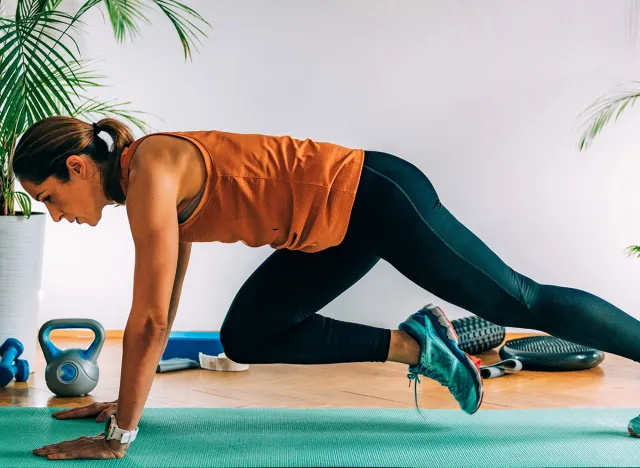
You no doubt already know that cardio is your friend when it comes to weight loss. That being said, incorporating some HIIT, or high-intensity interval training, into your usual cardio routine can make a big difference in terms of leaning out. Characterized by short bursts of intense motion followed by a shorter period of rest repeated in a cyclic manner, HIIT has recently emerged as a popular approach to cardio. For example, perform 40 seconds of jumping jacks followed by 15 seconds of rest, and repeat 5-10 times total, and boom! You've done a HIIT workout.
HIIT has been shown to burn more calories than traditional cardio, promote increased fat burning even while at rest, and can be accomplished in a fraction of the time it would take to complete a regular workout!
"To maximize your metabolic rate, trigger protein synthesis for the repair and replenishment of muscles, and reap the rewards of cardio exercise without having to take hours out of your day, HIIT is the way to go," McNamara recommends. "Keep your sessions short, sharp, and intense (30 minutes or less will suffice) and separate them from your weight training sessions. Keep your HIIT session to a maximum of 2-3 a week, ideally with 48 hours in between."
Related: This Workout Is Three Times Better for Your Health Than Walking, New Study Says
Don't neglect your muscles
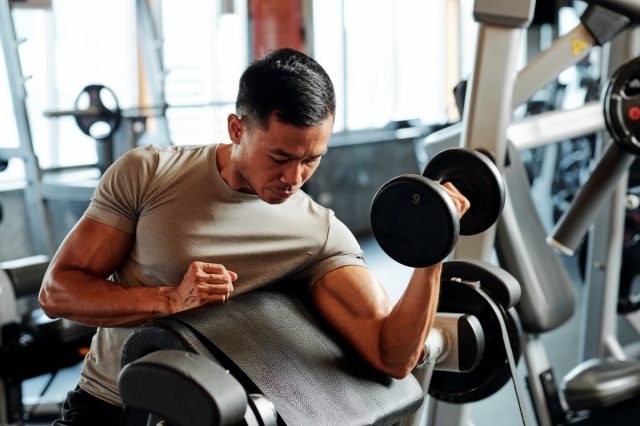
While working toward a lean, toned look, tons of people make the mistake of focusing entirely on aerobics. This approach, however, is only covering half the fitness fight.
"Many people think that the fastest way to get lean is to do cardio hours, maximizing the 'calories burned' figure on their treadmill or fitness tracker," McNamara states. "But maintaining your weight-training throughout a fat loss phase is essential to maintain strength and muscle mass. Cutting back on weight-training when you cut back on calories will actually lead to increased muscle loss, which, in turn, will cause your metabolic rate to plummet."
We all want to look our best and slim down, but at the same time, no one wants to sacrifice their muscles or strength. Besides that, ensuring your muscles are healthy and growing will actually help you lean out faster. Bigger muscles mean more calories burned.
"Trainers often ask their clients how they want to feel when they achieve their sought-after goals. The most common answers are 'fit,' 'lean,' 'confident,' and 'strong,'" says Life Time Dietitian and Personal Trainer Paul Kriegler. "To achieve these results, following a relatively intense resistance training is essential. This could include bodyweight plyometrics, advanced yoga practice, or a significant devotion to consistent weightlifting with heavier weights than you might normally do."
Kriegler adds that a resistance training session should be strenuous enough to induce a period of rest and recovery for your body.
"The other tip I'd pair with strength training is increasing your protein intake to about one gram per pound of your ideal body weight," Kriegler says. "High-protein diets support the maintenance or growth of muscle and are more effective than other diets for the maintenance of weight after weight loss."
For more, check out This 5-Move At-Home Workout Will Help You Build Strength.
